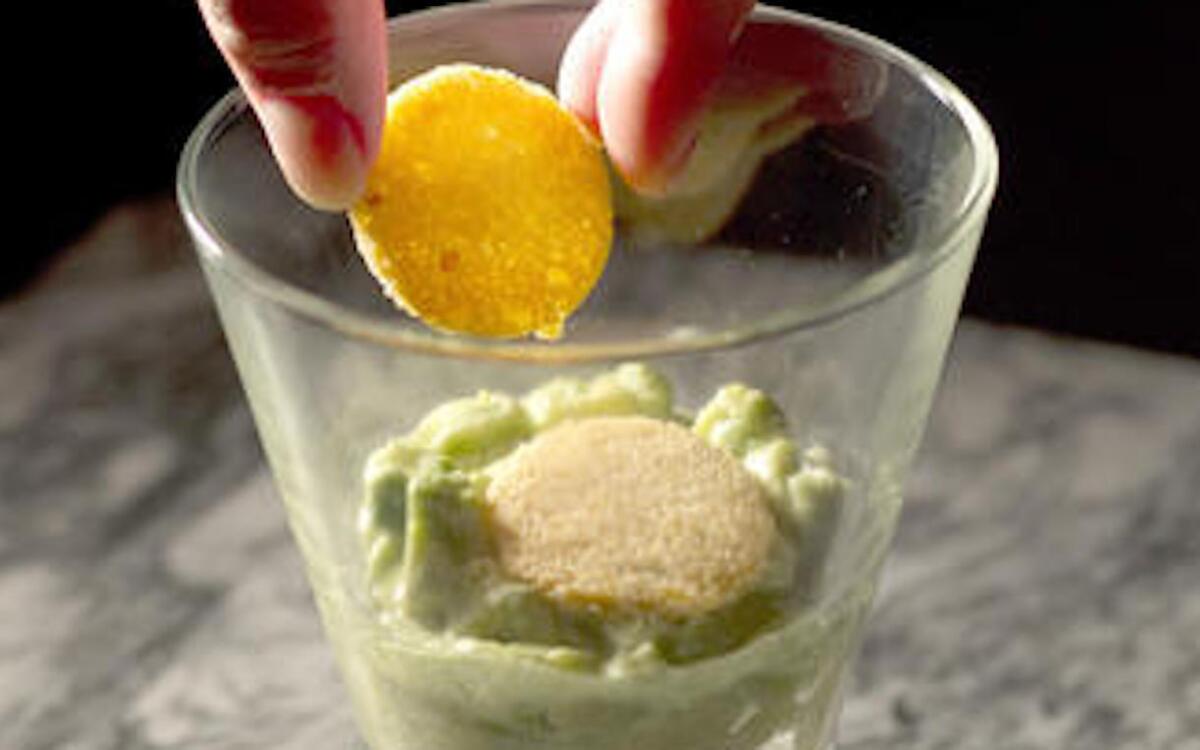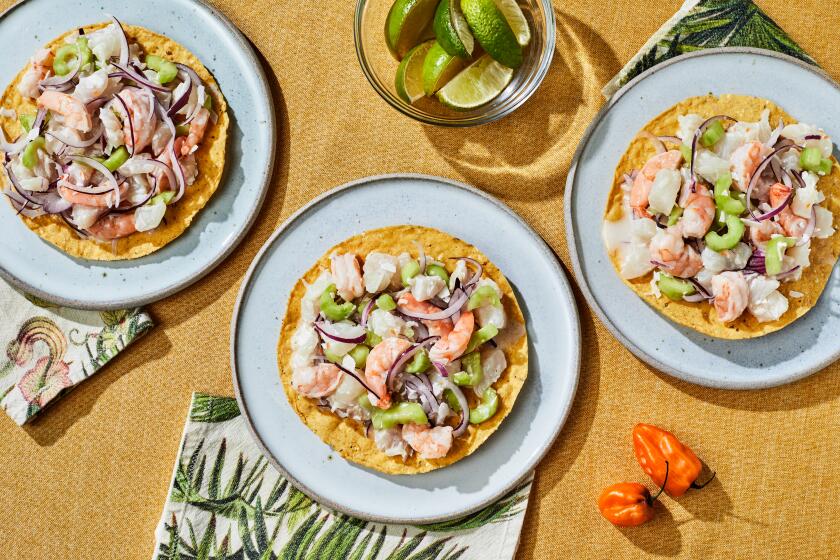Hackleback Caviar with Hass Avocado Tartare and Melba Toasts

Holiday meals tend to pass by in a blur of turkeys, hams, roast beef and sweet potatoes. How do you break through that to make an impression on your guests? Caviar is one sure cure. And it’s one that can be delivered on a range of budgets.
Though caviar is synonymous with luxury, opulence and indulgence, if you know what you’re doing it can still be served at a relatively modest price and still deliver the goods. There is a wide range of caviar products, and the trick is knowing which ones are best used in which situation.
For example, hackleback caviar is delicious, affordable and easily obtained. I like to serve it with avocados and Melba toast, which offers an interesting contrast of textures — the firm saline “pop” of the caviar, the creamy avocado and the crisp, wafer-thin toasts.
At the French Laundry and Per Se, we use California white sturgeon caviar, which is extremely high quality and is sustainably raised along the Sacramento River. This is what we use in my signature dish Oysters and Pearls. It is more expensive, so you want to serve it in a way that will show off the quality, such as using it as a topping for deviled eggs.
Another domestic caviar comes from the paddlefish, which is a close relative of sturgeon raised in the Southeast. It offers a tremendous bang for your buck, as the quality is very good but the price is affordable. A sunchoke panna cotta is the perfect foil for the caviar: It is rich, nutty, slightly sweet yet subdued enough to let the flavors of the caviar shine through. Even better, most of the dish can be prepared in advance and quickly finished at the last minute.
Pressed caviar is essentially a paste made from eggs that have been damaged and can no longer be sold as whole. While the texture and appearance of the caviar has been lost, the taste remains, making this an economical way to impart the flavor of caviar into a dish, such as when we use it as a stuffing for a confit of salmon.
And then, of course, there is the glory of Ossetra caviar, the best quality caviar that is commonly available. With an ingredient this special (and this costly), you really want to present it in the simplest way possible: buckwheat and buttermilk blini. It is incredibly simple yet sophisticated and allows the caviar to be at center stage. The contrast of textures and temperatures between the ice cold, briny caviar and the hot, buttery blini is indulgent perfection.
But please resist the urge to serve this with caviar garnishes such as minced onion, eggs and capers, no matter if they are considered classic. Caviar this good is best unadorned.
food@latimes.com
Heat the oven to 350 degrees and select the serving glasses for the dish. To select the serving glasses, set aside four small glasses or dishes with a relatively narrow diameter (about 1½ inches) and relatively straight sides, such as a whiskey glass or liqueur glass. Chill the glasses before assembling the final dish.
Use a bread knife to cut the bread evenly into slices three-sixteenths of an inch thick. Choose a cookie cutter or ring punch that is slightly smaller than that of the interior diameter of the serving glasses. Punch out two disks of bread per portion (e.g., 8 disks for four servings) from the slices of bread. It is a good idea to do a couple of extra so that you can choose the nicest ones.
Line a flat, heavy cookie sheet with a Silpat or parchment paper. Brush the Silpat or parchment with a thin film of clarified butter. Evenly distribute the disks of bread on top of the buttered baking mat. Brush another Silpat or sheet of parchment as before and lay this over the disks of bread. Now set another flat and heavy baking sheet on top to sandwich the bread in between.
Place the sheet in the center rack of the oven, then place a couple of heavy pans on top of the upper sheet pan. The heavier the better, as this will compress the bread to create a wafer-thin, crispy Melba toast. Toast the bread for 20 minutes, then check and remove any toasts that are golden brown. Continue to bake the remaining toasts, checking every 5 minutes, until all of the toasts are baked (usually about 30 minutes total baking time). Store the toasts in a dry, air-tight container until needed.
Prepare the avocado tartare no more than 2 hours before serving to prevent browning. To make the tartare, cut the avocado in half and remove the pit. Scoop the avocado out of the skin with a large spoon, and then finely chop the halves with a sharp knife. Transfer the avocado to a small bowl and mix in the lime juice, salt and ascorbic acid if using, followed by the crème fraîche, olive oil, shallot and zest. Place this mixture into a plastic piping bag, press out as much air as possible and chill it in the refrigerator.
About 15 minutes before serving, cut a one-half-inch opening from the tip of the piping bag. Pipe about 3 to 4 tablespoons of the avocado tartare into the bottom of a serving glass. Set two Melba toasts on top of the avocado and gently press to flatten and level the surface as well as expel any air. Next, use a small spoon to place about an ounce of caviar on top of the Melba toast. Use this spoon to carefully flatten and level the surface of the caviar. Repeat with the remaining glasses and serve immediately.
Get our Cooking newsletter.
Your roundup of inspiring recipes and kitchen tricks.
You may occasionally receive promotional content from the Los Angeles Times.















